Reserve Bank of Australia Annual Report – 2016 Community Engagement
Community engagement is very important in ensuring that the Reserve Bank succeeds in promoting the public interest, which is a core value of the Bank. Staff across the Bank's Sydney Head Office and offices in other states work to ensure that the Bank's role and actions are well understood by the community and that the Bank in turn understands the community's perspectives. The Bank sponsors academic research and education, and further engages with the public and academic community through the Reserve Bank of Australia Museum.
Extensive time and effort is devoted in many ways by staff at all levels to ensure that the Reserve Bank's role and actions are clearly explained to the public, business and government, and that community perspectives, priorities and concerns in turn are well understood by Bank staff. In addition to the specific details of community engagement set out in this chapter, many more individual engagements of Bank staff – from the Governor through to staff from all parts of the Bank – occur each week with different individuals and groups throughout the community. These range from the many public speeches given by senior Bank staff, as discussed in the chapter on ‘Accountability and Communication’, to small private discussions.
Activities of the State Offices
In addition to its Head Office located in Sydney, the Reserve Bank has offices in Adelaide, Brisbane, Melbourne and Perth, whose key purpose is to oversee the Bank's liaison program. These offices also form a key component of the Bank's communication with members of the public, business, government, community organisations and academia in their respective states.
The Reserve Bank meets regularly with businesses and associations in every state and across industries in the Australian economy. The information collected under the liaison program complements that available from official sources and helps the Bank to monitor cyclical and structural developments, as well as the effect of unusual events on the Australian economy. The broad messages gathered through liaison are incorporated into the Bank's policy discussions and public communication. While much of this information is used internally in helping shape the Bank's assessment of the Australian economy, a number of the topical articles that feature regularly in the Reserve Bank Bulletin draw on the broad themes and messages coming from the liaison program.[1]
As noted in the chapter on ‘Governance’, the Reserve Bank Board meets in state capitals on a regular basis, with the Board meeting usually held in the Bank's office in the particular city. A dinner with senior members of the local community is usually held on the evening following the Board meeting. These dinners, which are attended by political, business and public sector leaders, as well as representatives of the education, not-for-profit and other sectors, provide an opportunity for relationships between local communities and the Bank to be strengthened. A dinner with senior members of the Sydney community is held every two to three years with the same objective. In 2015/16, dinners were held in Perth in December 2015 and in Hobart in April 2016, the first time the Reserve Bank Board had met in that city.
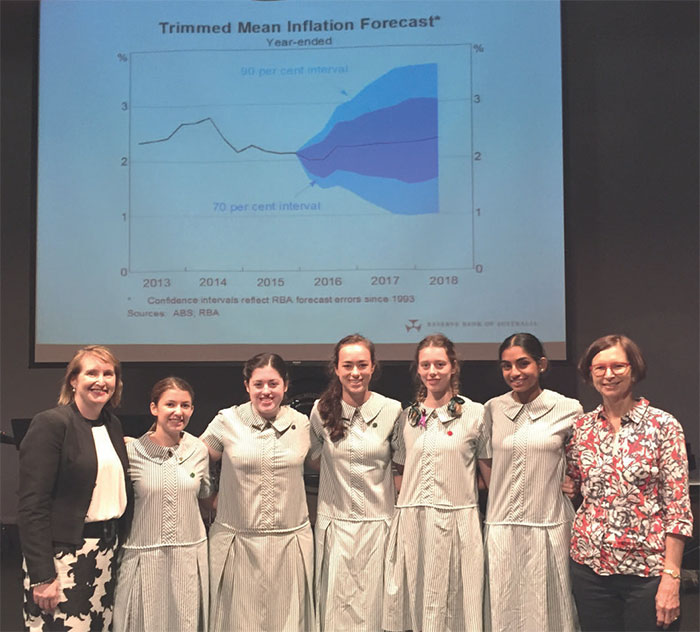
Staff in the State Offices also play a role in the Reserve Bank's efforts to keep the public informed of its evolving views on the economy. They hold discussions with a broad cross-section of the community, regularly giving presentations on economic developments to business groups, community organisations and educational institutions in state capitals and regional centres.
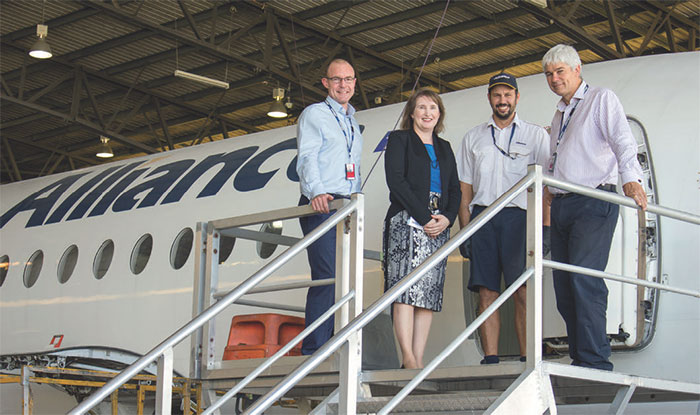
Staff from the State Offices also regularly visit Tasmania and the Northern Territory to gather information on economic conditions in those parts of Australia.
Liaison with Small Businesses
The Reserve Bank continues to convene its Small Business Finance Advisory Panel, which was established in 1993. It meets annually to discuss issues relating to the provision of finance and the broader economic environment for small businesses. Membership of the panel is drawn from a range of industries across the country. The panel provides a valuable source of information on financial and economic conditions faced by small businesses. The Bank's liaison program also involves Bank staff meeting with a number of small businesses and small business groups.
Reserve Bank of Australia Museum
The Reserve Bank's Museum houses a permanent collection of artefacts, hosts periodic exhibitions and offers regular talks and tours for visitors. The permanent collection portrays the story of Australia's banknotes against the background of the nation's broader social and economic history. Visitors can view a display of the types of money used before Federation – from an early colonial rum bottle through to Australia's first gold coins. They can then view various banknotes produced since the first Australian note series in 1913–15, progressing through each era of banknote production. Finally, the Museum focuses on Australia's polymer banknotes, describing their design, security features and production. When viewing the collection, visitors can observe the evolution of the nation's identity as expressed through its banknotes, learn about the influential women and men depicted on them and study the artwork used in banknote design.
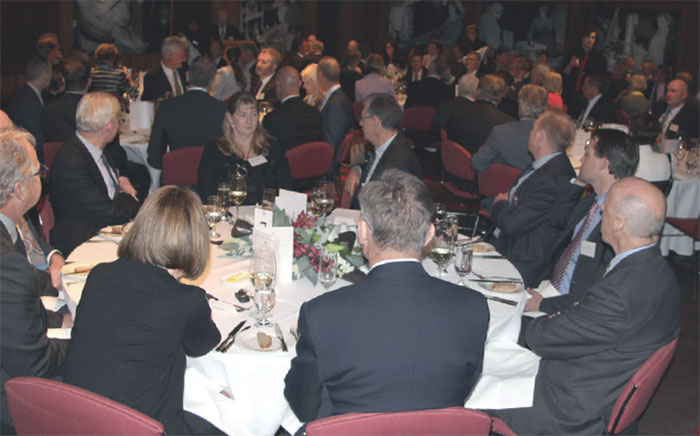
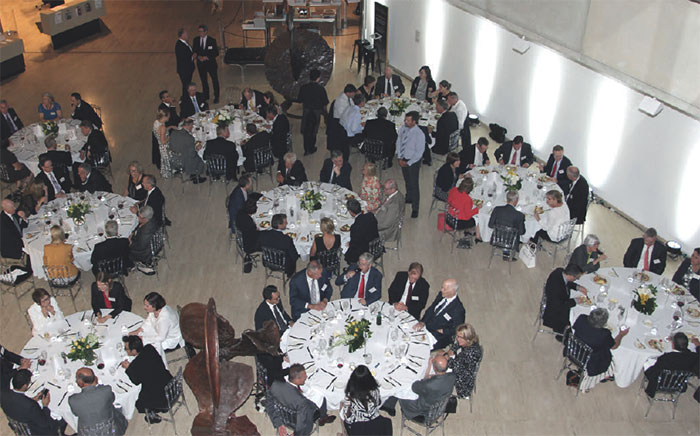
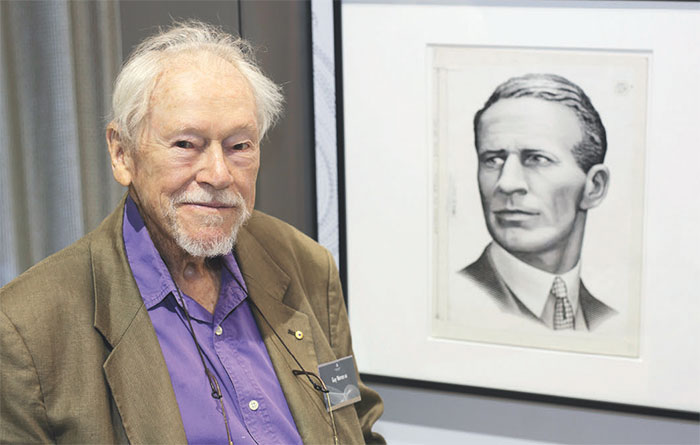
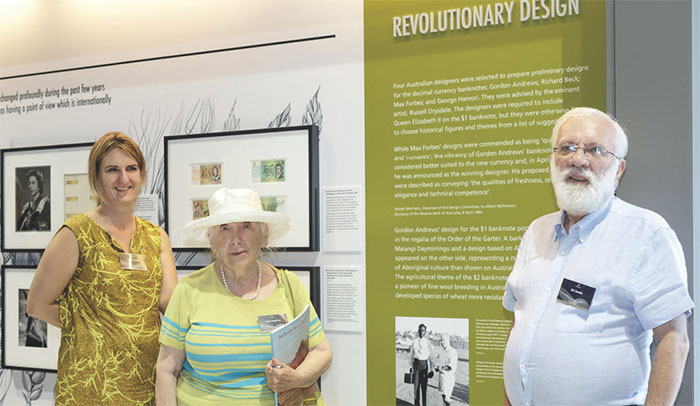
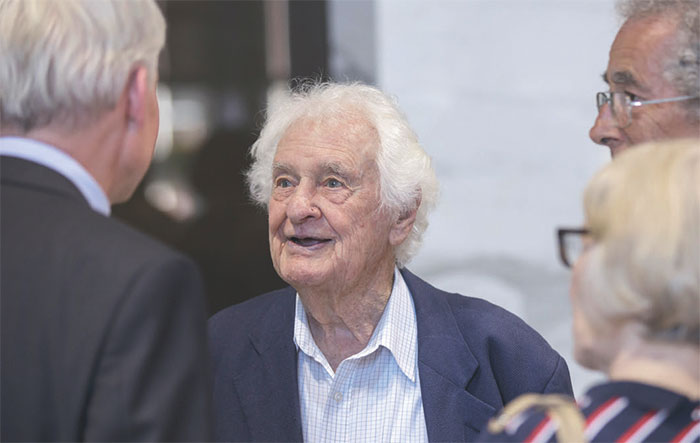
To mark the 50th anniversary of the introduction of decimal currency on 14 February 1966, a special temporary exhibition entitled The Decimal Revolution was introduced in 2016. It complemented the permanent decimal banknotes series collection with artefacts related to the social context of this radical change to the way in which transactions were conducted. The exhibition highlighted the distinguishing aspects of the bold and innovative banknote designs by Gordon Andrews, showing how the imagery captured the nation's distinctive identity. It showed how Indigenous designs were given prominence for the first time in the nation's currency. The physical exhibition was also accompanied by an online exhibition that provided the public with a rich array of archival records in relation to decimal currency. It honoured the role of key contributors to the decimal currency enterprise who, with their descendants, attended an anniversary function at the Bank in mid February 2016.
As part of the ongoing commemoration of the centenary of Word War I, a temporary exhibition entitled Before Sunset: The Bank & World War I remains a feature of the Museum. It explains how the First World War saw the emergence of central banking in Australia. These functions were originally performed by a part of the Commonwealth Bank of Australia that later became the Reserve Bank of Australia. The exhibition showcases the Bank's fundraising efforts during the war and honours those staff who enlisted. It displays rare letters sent to the Governor of the day from the battlefields, including Gallipoli, along with a range of other artefacts related to the Bank's involvement in the war.
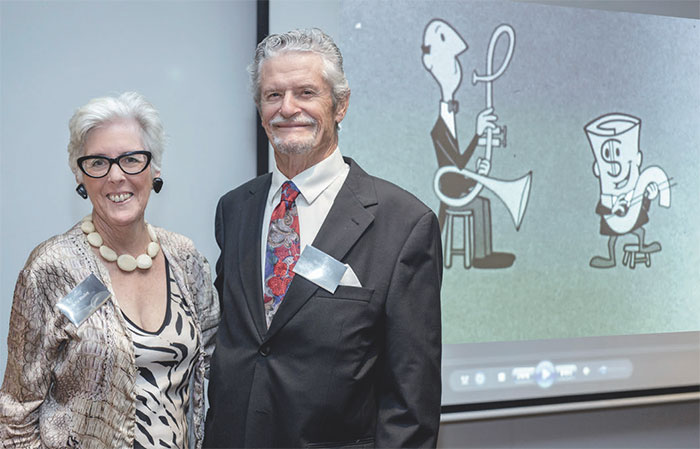
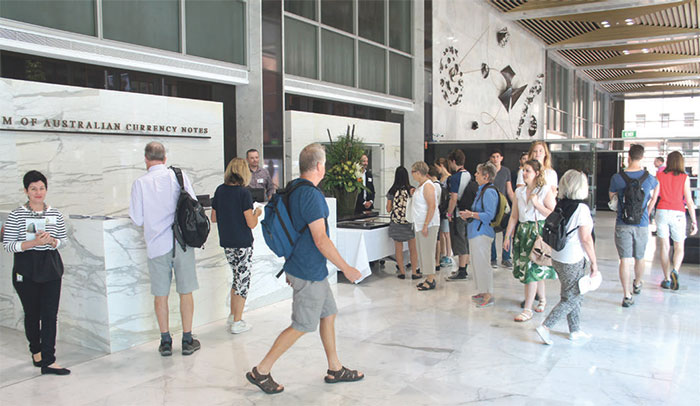
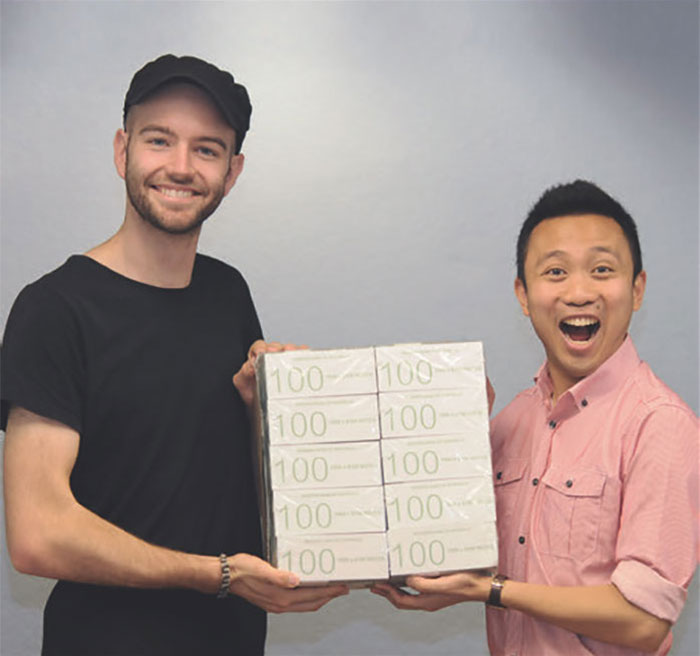
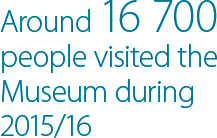
Around 16,700 people visited the Museum during 2015/16, with visitor numbers continuing to grow in recent years as the Museum's program for community engagement and public education expands. There were over 1,500 visitors on Australia Day 2016 alone. The Reserve Bank again participated in Sydney Open in November 2015, with over 1,400 visitors to the Museum and smaller groups enjoying access to selected parts of the Head Office building to learn about its unique architectural features and banknote production. A wide cross-section of the public visited the Museum, though educational groups accounted for the largest share of visitors, with school students accounting for over one-third of total visitors and university students accounting for another quarter. In addition to talks to senior high school and university students about the economy and the role of the Bank, there has been a significant increase in the number of talks about banknotes, highlighting their production process and security features. There has also been an increase in the number of talks to other groups, including new migrants, those with English as a second language and those from remote or disadvantaged communities. Most of the information in the Museum is depicted on the Museum's website.
Assistance for Research and Education
The Reserve Bank sponsors Australian and international economic research in areas that are closely aligned with its primary responsibilities. This sponsorship includes financial support for conferences, workshops, data gathering, journals and special research projects, and encompasses areas of study such as macroeconomics, econometrics and finance. In addition, the Bank provides financial support for the activities of the Centre for Independent Studies and the Sydney Institute. It is also a member organisation of the Committee for Economic Development of Australia (CEDA); membership includes an annual research contribution.
In 2015/16, the Reserve Bank continued its longstanding contribution towards the cost of a monthly survey of inflation expectations undertaken by the Melbourne Institute of Applied Economic and Social Research at the University of Melbourne. The Bank also maintained its contribution towards a quarterly survey of union inflation and wage expectations undertaken by the Australian Council of Trade Unions (which had previously been undertaken by the Workplace Research Centre at the University of Sydney).
The Reserve Bank continued to provide financial support for the International Journal of Central Banking, the primary objectives of which are to disseminate first-class, policy-relevant and applied research on central banking and to promote communication among researchers both inside and outside central banks. The Bank continued its longstanding practice of providing financial support for the Group of Thirty's program of research into issues of importance to global financial markets. The Governor is a member of the Bretton Woods Committee, whose programs and publications aim to promote economic growth, reduce poverty and maintain financial stability globally. The membership entails a modest annual financial contribution.
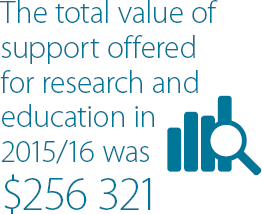
Financial assistance to Australian universities each year includes contributions towards the cost of conferences on economics and closely related fields. In 2015/16, these conferences included: the Economic Society of Australia's Conference of Economists, held jointly with Griffith University, Queensland University of Technology and the University of Queensland; the 21st Melbourne Money and Finance Conference; the University of New South Wales 28th Australasian Finance & Banking Conference; and the Paul Woolley Centre for the Study of Capital Market Dysfunctionality Conference 2015, held at the University of Technology, Sydney. The Reserve Bank also supports the discussion of economic issues in the community by providing a venue for the Economic Society of Australia's Lunchtime Seminar and the Emerging Economist Series.
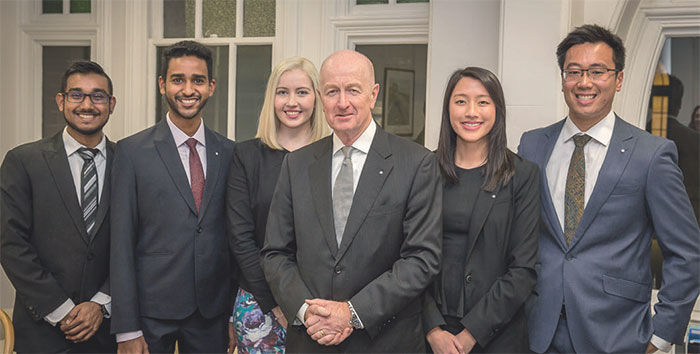
The Banking and Finance Oath 2016/17 Young Ambassadors program presented by Governor Glenn Stevens (centre) (from left) Treshan Fernando, Yaishvi Rooprarain, Amy Rodda, Tram Bui, Dominic Tran, April Buckley (absent)
The Reserve Bank sponsors an annual essay competition across Australia, which is designed to engage and support undergraduate students interested in economics. The competition is organised jointly with the University of New South Wales Economics Society and the Economic Society of Australia. In 2015, students were invited to discuss the implications of falling commodity prices and the transition of Australia's mining industry from the investment phase to the production phase. Scott Tilbury (University of New England) wrote the winning essay, the runner-up was Hugh Oliver (Monash University) and the best essay from a first-year student was written by Jim Yue Xu (University of New South Wales). The Governor presented these students with prizes at a ceremony at the Bank in October 2015. For the 2016 competition, the topic of the essay competition is economic policy options at low interest rates. Students are asked to explain the channels of monetary policy transmission and any impact low interest rates may have on these channels, and to discuss other economic policies that could be used to support growth in economic activity and provide impetus to inflation.
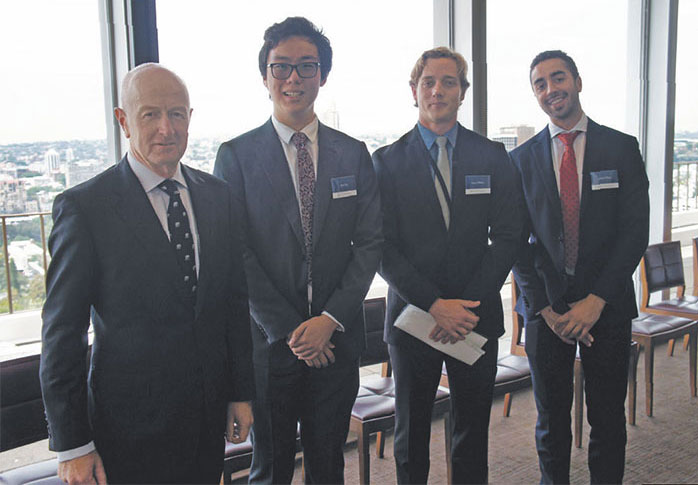
In conjunction with the Australian Prudential Regulation Authority (APRA), the Reserve Bank has continued to sponsor the Brian Gray Scholarship Program, initiated in 2002 in memory of a former senior officer of the Bank and APRA. Four scholarships were awarded under this program in 2016 for: PhD studies in economics at the Australian National University; science honours in actuarial studies at Curtin University of Technology; mathematics and finance honours at the University of Technology Sydney; and commerce honours at the University of Western Australia. The cost to the Bank of these scholarships in 2015/16 was $30,000.
The total value of support offered for research and education in 2015/16 was $256,321.
Over the past year, the Reserve Bank hosted visits by numerous researchers (including academics, post-graduate students, authors, journalists, numismatists, heritage architects and designers) interested in accessing the Bank's archives. The archives contain a rich collection of records about the Bank's own activities as well as those of financial institutions in Australia that predate the creation of the central bank as a separate institution. Because the central bank was formerly the government printer for materials other than banknotes, the Bank's archives also include a historical collection of Australian stamps, posters and vouchers. There has been a substantial increase in the number of requests relating to historical episodes of financial crisis and the involvement of financial institutions in the two world wars, along with requests related to the 50th anniversary of the introduction of decimal currency. In addition, there were numerous requests relating to historical design images to be reproduced in publications. The program to digitise the Bank's most significant archival records continued during the year in review, with many thousands of records (including photographs and rare glass plate negatives) scanned and being made available electronically to researchers. The Bank's Historian, Professor Selwyn Cornish of the Australian National University, is at an advanced stage of his research for the next volume of the official history of the Reserve Bank, which covers the period 1975–2000.
Charitable Activities
During 2015/16, the Reserve Bank made its 14th annual contribution of $50,000 to the Financial Markets Foundation for Children, which is chaired by the Governor. For many years, the Bank has donated a signed uncut banknote sheet to the ASX Thomson Reuters Charity Foundation for auction, which usually raises over $30,000. The Foundation includes the Financial Markets Foundation for Children in the distribution of auction proceeds. In early August 2016, the Governor addressed the Anika Foundation's 11th public event to raise funds to support research into adolescent depression and suicide. This was Glenn Stevens' final address to the Anika Foundation and his last public speech as Governor.
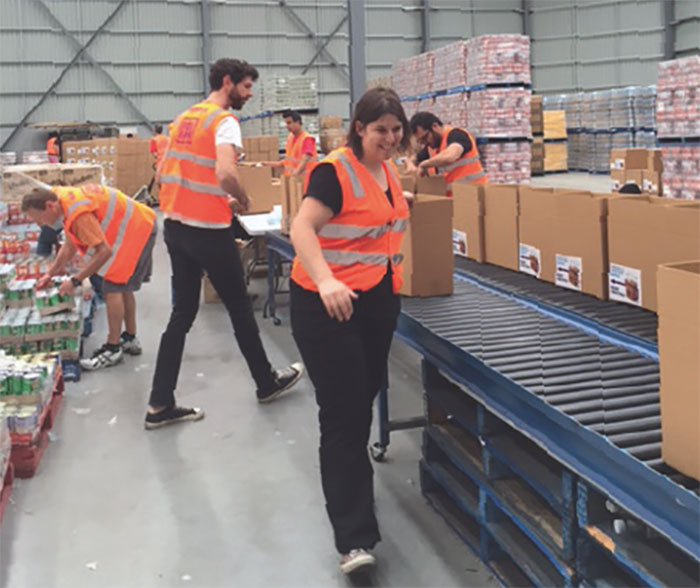
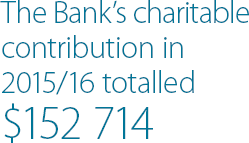
The Reserve Bank's corporate philanthropy program involves several initiatives, key among which involves dollar-matching staff payroll deductions (totalling $90,000 in 2015/16) to the Reserve Bank Benevolent Fund. The Bank also made a small donation to the MS Society, which matched funds raised by Bank staff participating in the ‘Sydney to the Gong’ charity bike ride in November 2015.
Reserve Bank staff participated in a number of volunteering activities in 2015/16, including the Cancer Council's Biggest Morning Tea fundraiser, the Smith Family Skilled Volunteer Program and Foodbank.
The Reserve Bank's contributions under all these initiatives in 2015/16 totalled $152,714. In addition, the Bank facilitates staff salary sacrificing under a Workplace Giving Program.
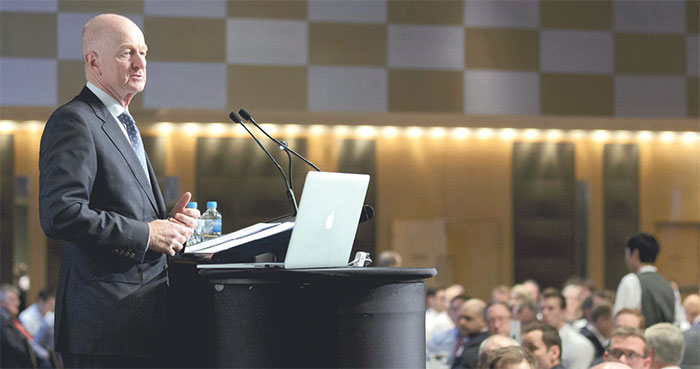
Footnote
For a comprehensive overview of the Business Liaison Program, see Reserve Bank of Australia (2014), ‘The RBA's Business Liaison Program’, Bulletin, September, pp 1–5. [1]